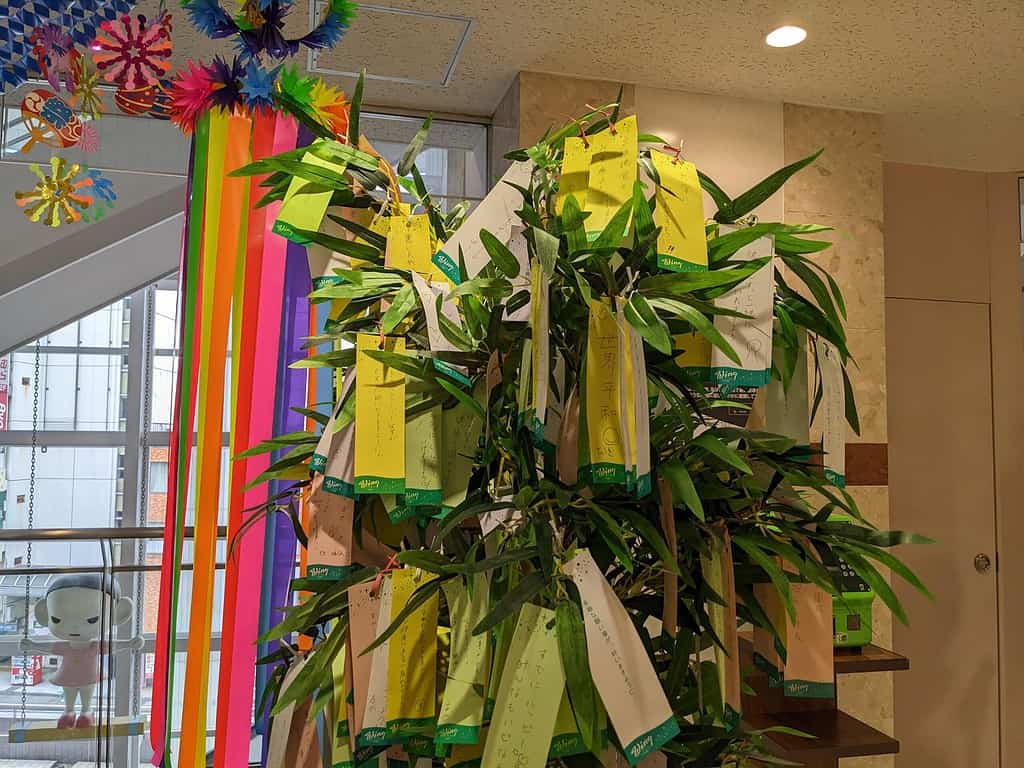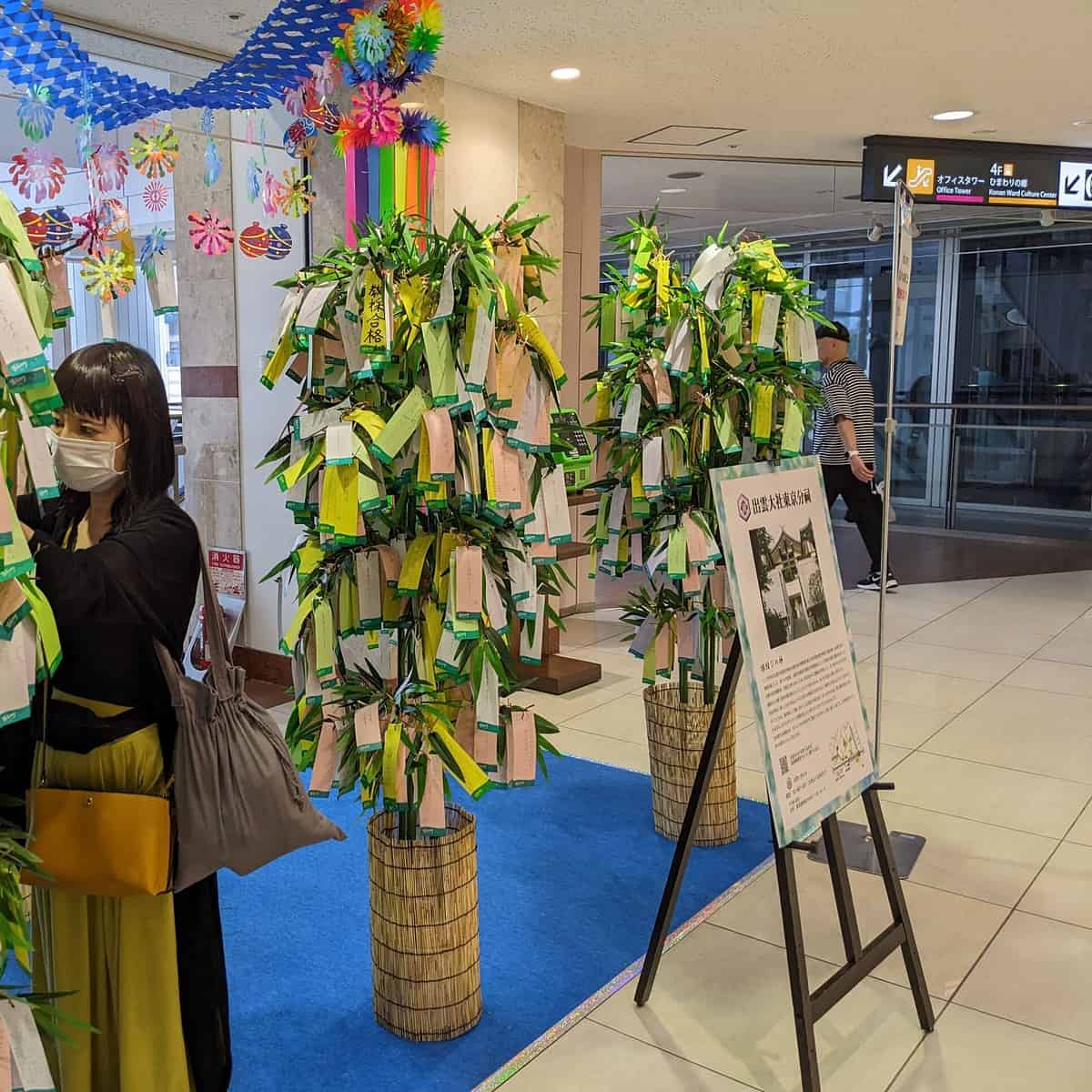Tanabata, meaning “Evening of the Seventh,” is a captivating festival deeply rooted in Japanese culture. This article delves into the significance of Tanabata, its cultural importance, and the enchanting traditions associated with this celestial celebration.
History of Tanabata
Tanabata has its origins in the ancient Chinese legend of “The Weaver Girl and the Cowherd.” The tale tells the story of two star-crossed lovers, Orihime (the Weaver Princess, represented by the star Vega) and Hikoboshi (the Cowherd, represented by the star Altair). According to the legend, the lovers were banished to opposite sides of the Milky Way and were only allowed to meet once a year on the seventh day of the seventh lunar month.
This poignant legend traveled from China to Japan during the Nara period (710-794), where it merged with local customs and beliefs. Over time, Tanabata became an eagerly anticipated festival celebrated throughout Japan.
Cultural Significance of Tanabata
Tanabata holds profound cultural significance, representing the theme of longing, hope, and the power of love overcoming obstacles. The festival embodies the belief that wishes made with a pure heart can come true, just as Orihime and Hikoboshi were reunited once a year.
The celebration of Tanabata showcases the Japanese appreciation for nature, art, and community. It is a time to celebrate the beauty of the starry sky and to express dreams, aspirations, and heartfelt wishes.
Traditions and Customs of Tanabata
The traditions and customs associated with Tanabata vary across different regions of Japan, but they all revolve around expressing wishes and creating vibrant displays. Here are some key elements of the Tanabata celebration:
- Wishing Trees
- Bamboo trees are central to Tanabata decorations, symbolizing the bridge across the Milky Way where Orihime and Hikoboshi meet.
- Colorful strips of paper called tanzaku are used to write wishes and are tied to the bamboo branches.
- People write their wishes, hopes, and dreams on the tanzaku, which are believed to reach the stars and come true.
- Festive Decorations
- Elaborate and ornate decorations adorn the streets, shopping arcades, and public spaces during Tanabata.
- Colorful paper ornaments, origami, and streamers known as “sasagaki” hang from bamboo branches, creating a vibrant and festive atmosphere.
- Cultural Performances
- Traditional dances, music, and theatrical performances are held during Tanabata.
- Community events feature lively processions, parades, and street performances, showcasing the local culture and folklore.
- Regional Variations
- Different regions of Japan have their unique customs and traditions associated with Tanabata.
- For example, in Sendai, they celebrate Tanabata on August 7th, following the Gregorian calendar, and display enormous and intricately decorated bamboo poles.

The Joy of Tanabata Today
Tanabata continues to captivate the hearts and imaginations of the Japanese people. It is celebrated with great enthusiasm and creativity across the country. Communities, schools, and families come together to participate in Tanabata activities, fostering a sense of unity and shared celebration.
In recent years, Tanabata has embraced modern influences, incorporating popular culture and creative expressions. Anime and manga-themed decorations, as well as modern renditions of the legend, add a contemporary touch to the festivities.
Additionally, Tanabata has become an opportunity to promote local craftsmanship and creativity. Artisans create intricate paper decorations, intricate origami designs, and handmade tanzaku with exquisite calligraphy, showcasing their skills and preserving traditional art forms.
Furthermore, Tanabata has expanded beyond its original date and is often celebrated throughout the month of July or August, allowing more people to participate and enjoy the festivities. This extended celebration period ensures that individuals from all walks of life have the opportunity to immerse themselves in the enchanting world of Tanabata.
The enduring charm of Tanabata lies in its ability to bring communities together. Schools organize Tanabata-themed activities, where children learn about the legend, create their own decorations, and write heartfelt wishes. Companies and organizations also engage in Tanabata festivities, fostering a sense of camaraderie and shared aspirations among employees.
Tanabata serves as a reminder of the power of dreams and the beauty of hope. It is a time for reflection, as individuals contemplate their aspirations and express their innermost desires. The festival encourages people to believe in the possibility of their wishes coming true and to nurture a sense of optimism and resilience.
In conclusion, Tanabata is a cherished festival in Japanese culture, honoring the enduring love of Orihime and Hikoboshi and celebrating the human spirit’s capacity for hope and connection. It is a time when communities come together to create dazzling displays, write heartfelt wishes, and revel in the joy of shared traditions. Through Tanabata, the Japanese people continue to honor their rich cultural heritage while embracing the beauty of imagination, dreams, and the power of love.

